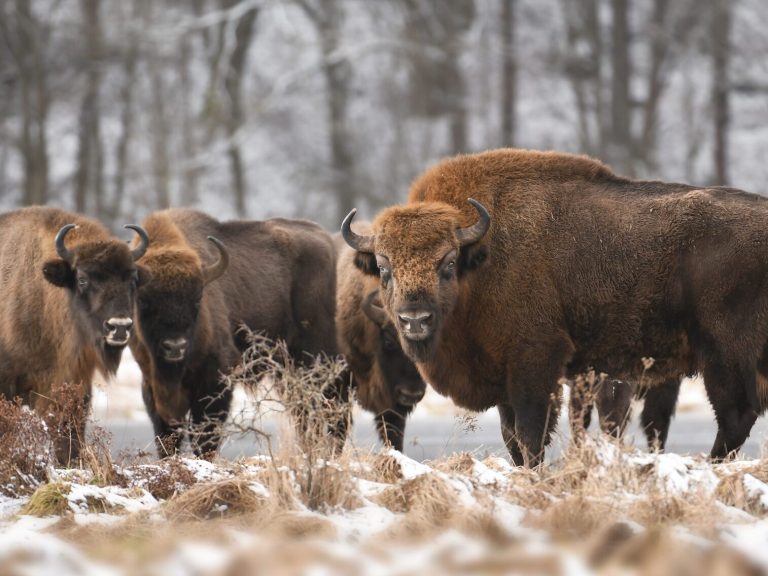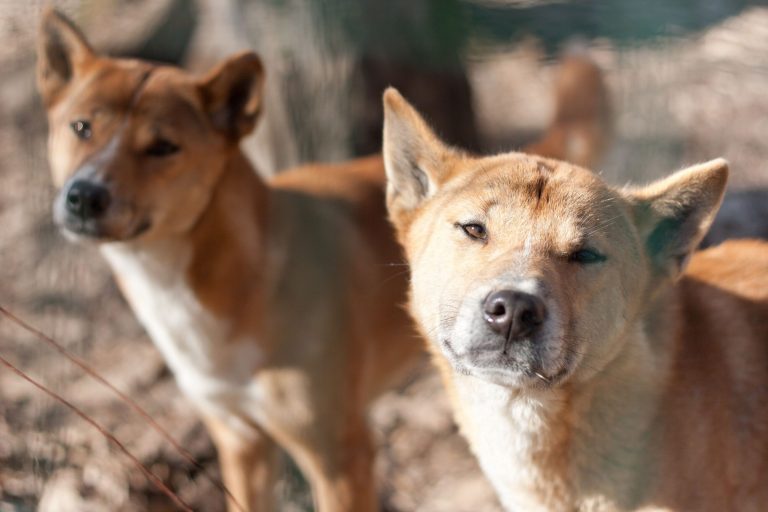Wolf attacks on people? The expert points out two things

Reports of wolf sightings and attacks should be treated with caution. Wolves’ behavior can be misinterpreted by laypeople. Moreover, in Poland there are breeds of dogs that are confusingly similar to wolves – notes wolf researcher Dr. Hab. in an interview with the Polish Press Agency. Robert Mysłajek.
Are there really more and more wolves in Poland, or are there simply more reports in the media about encounters with wolves?
Ph.D. Robert Mysłajek: Wolves are currently found all over the country. They inhabit not only dense forest complexes, but also smaller forests interspersed with agricultural areas, e.g. corn crops, which provide animals with good seasonal cover. However, the large number of media reports about wolves is mainly influenced by the availability of recording devices, e.g. monitoring with cameras and camera traps, as well as the ability to take photos and videos by anyone with a phone. These materials are instantly published on social media, from where they reach the local media and then the national media. We are also dealing with the phenomenon of “herd journalism”, where every topic is reported by all media, without any verification of the source information. Consequently, due to media noise, even a single report of a wolf sighting turns into a large-scale problem.
How do you think we should respond to such media reports?
The most important thing is to verify the facts at the source. A great example is the videos from surveillance cameras that have recently appeared on the Internet, recording wolf attacks on dogs. These films are sent as coming from Poland. This year, we verified five such films and all of them turned out to be copies of materials published by Russian television channels – but cropped in such a way that Russian subtitles were not visible and Russian commentary could be heard. However, it was enough to enter the appropriate keywords in Cyrillic in Internet search engines and the original material could be found within a few minutes.
We should approach revelations about wolves attacking people in a similar way. The interpretation of wolf behavior given by laypeople must be verified by an expert, and media reports cannot be based only on someone’s feelings. These are always subjective opinions. For some people, observing a wolf from 100 meters will be a dangerous situation, for others it will not be. Helpful criteria for assessing the potential threat were developed by the Large Carnivore Initiative for Europe expert group operating within IUCN (World Conservation Union) – (more here).
How would you comment on the case from the area of Brzozów, where the sawmills are? – according to their reports – two wolves came close to where they were working?
This is a good example of hasty interpretations of wolf behavior. According to the sawmen, the wolves’ behavior was aggressive, but their reports also showed that there was no direct attack. Their statements were picked up by the local media, which presented the sawmen’s account as hard evidence of aggression and attacks on people. The case was quickly presented in a similar tone by the national media, which probably contributed to the quick decision to shoot. The killed wolves turned out to be ten-month-old females, with a relatively low body weight for their age. It is difficult to expect sawmills to know how to distinguish an adult puppy from an adult wolf, and aggressive behavior from fear, but it is similar in wolves. The autopsy showed that one of the juvenile females had peelings and carrots in its digestive tract, which indicates that they searched for food in bait stations or farm waste dumps. Such young wolves should be cared for by adult parents during this time; it is the parental pair that provides them with food at this age, because they do not hunt yet. It is therefore necessary to explain why these young wolves were left unattended for a long time, which resulted in them scavenging on carrion and searching for food within buildings. It seems most likely that the parent pair were illegally killed.
Are wolves a threat to humans? Under what conditions can they be dangerous?
Wolves in the wild treat people with great caution and avoid direct contact. Problems are most often caused by juvenile, sick, injured or habituated individuals (accustomed to human presence – note by PAP). Every year there are cases of wolf pups being taken from the forest and attempts to keep them illegally. However, overgrown puppies cause a lot of problems and are often released back into the natural environment by people who illegally keep them. However, such wolves are social cripples, unable to establish natural relationships with representatives of their own species. They stay close to people and can generate conflict situations. It is therefore very important to make people aware of how to behave towards large predators – take care of the disposal of meat waste and dead animals from farms, and avoid leaving food waste in forests. And definitely pursue and punish people who take puppies from the forests.
Chairman of the Polish Football Association – National Hunter Paweł Lisiak expresses the need to consider the concept of controlled killing of wolves. He estimates that the number of wolves can only be controlled by hunters and only through strictly controlled shooting. He assumes that it is necessary to recreate it in wolves “a mutually beneficial fear of man“. Is it possible?
This statement says a lot about how hunters would like to shape people’s relationships with wild animals. In their opinion, they are based on “fear of man”. In my opinion, relationships with wild animals should be based on knowledge and the implementation of pragmatic and effective solutions, and not on waiting or forcing “fear” in animals. Wolves are social animals, with complex relationships between individuals within family groups. Their caution in contacts with people does not come from some innate fear of people, but from personal experience. By nature, puppies and juveniles are less experienced and therefore cautious, while adults are more experienced and less trusting of people. A shot wolf will no longer gain any experience, much less pass it on. The best example of the failure to translate intensive shooting into fear of humans is the fox, which is a game species and at the same time appears everywhere, is active also during the day and shows no particular fear of humans. The same applies to deer, wild boars and other game animals that we can observe every day, also in urban areas.
Is the number of wolf-man conflicts increasing?
It should be remembered that in this type of “conflicts” the injured party may be both humans and wolves. People may, for example, suffer losses in farm animals, while wolves die at the hands of poachers or become victims of collisions with vehicles. However, while we do not observe a sharp increase in damage to farm animals caused by wolves, wolves themselves are increasingly becoming victims of car accidents and dying illegally, shot or caught in snares.
And how many of the reports about wolf sightings in the city are true? Can people confuse a wolf with another animal?
There are cases of wild animals, including wolves, straying into built-up areas. Nevertheless, reports of wolf sightings should be approached with caution, because in Poland there are breeds of dogs that are confusingly similar to wolves, e.g. Czechoslovakian wolfdogs. Therefore, each report of this type should be verified by an expert, preferably based on photos and videos.
How many wolves are there actually in Poland?
In Poland, the Chief Inspectorate of Environmental Protection is responsible for monitoring species protected in accordance with the Nature Protection Act. Approximately PLN 3 million was spent on determining the number and distribution of the wolf. The report results are available here. Data provided by the Chief Inspectorate of Environmental Protection indicate that they number approximately 2,000. individuals.
Dr. hab. Robert Mysłajek from the Department of Ecology, Faculty of Biology, University of Warsaw and the Association for Nature “Wilk”, is a specialist in the field of ecology and protection of mammals. He has been researching wolves for years.






